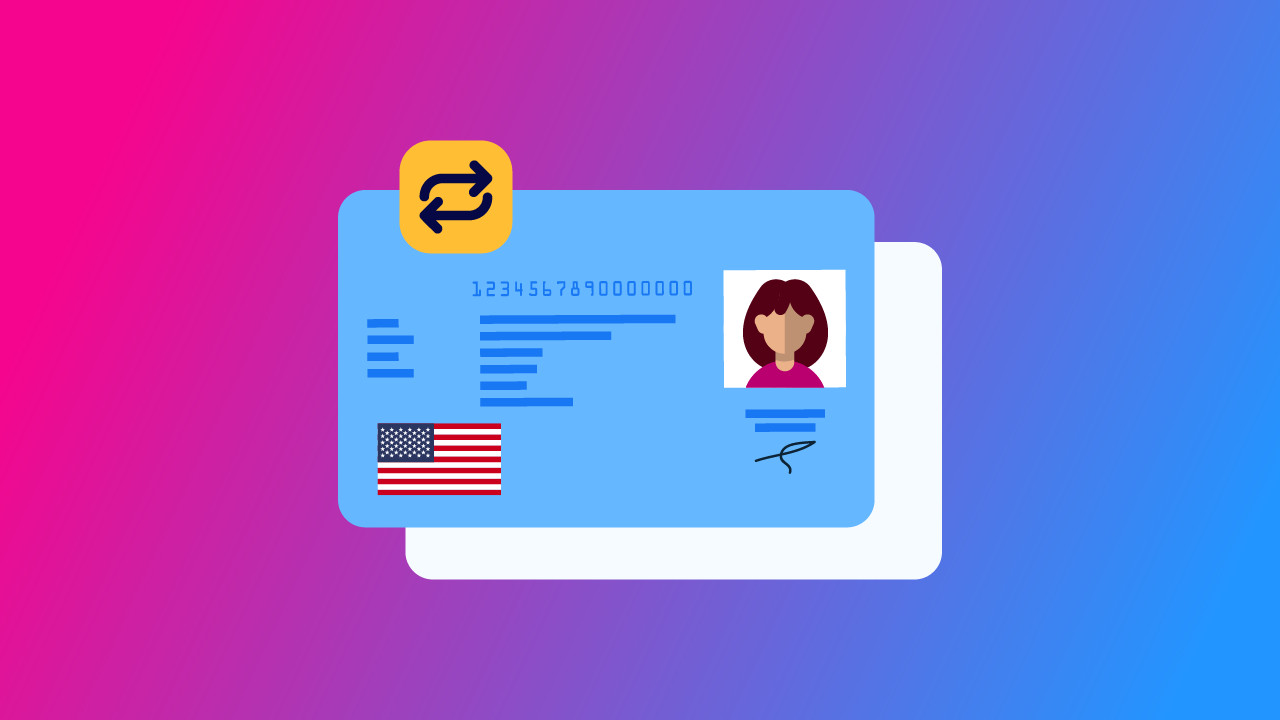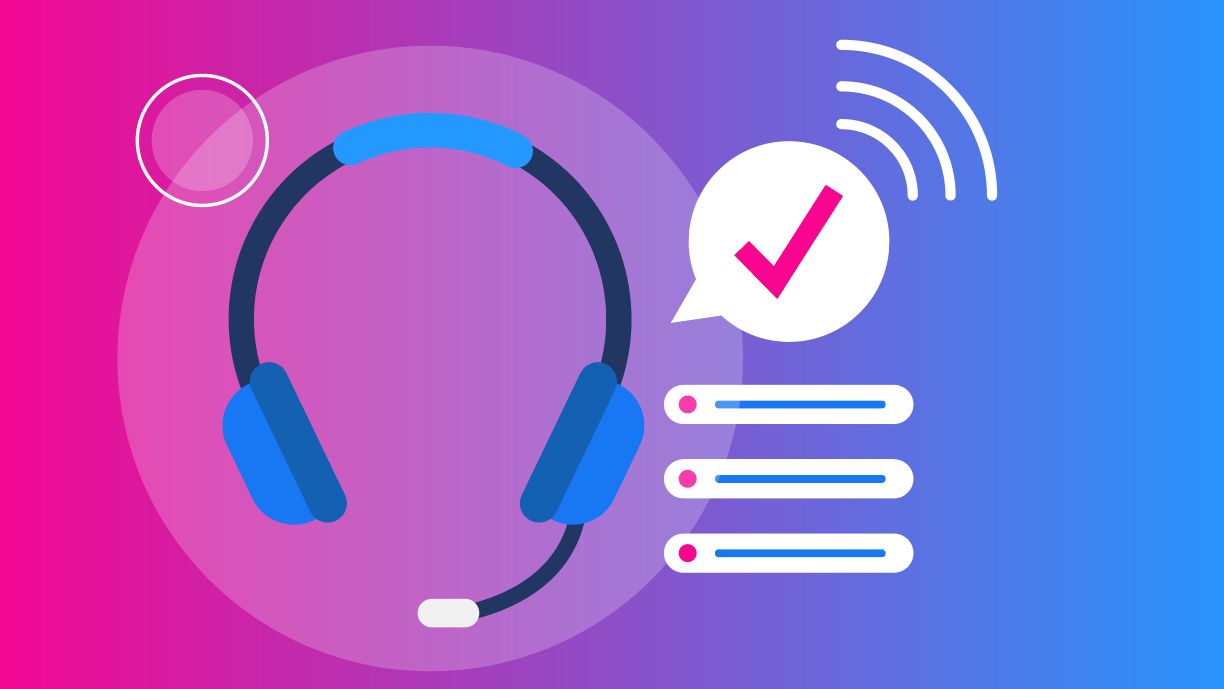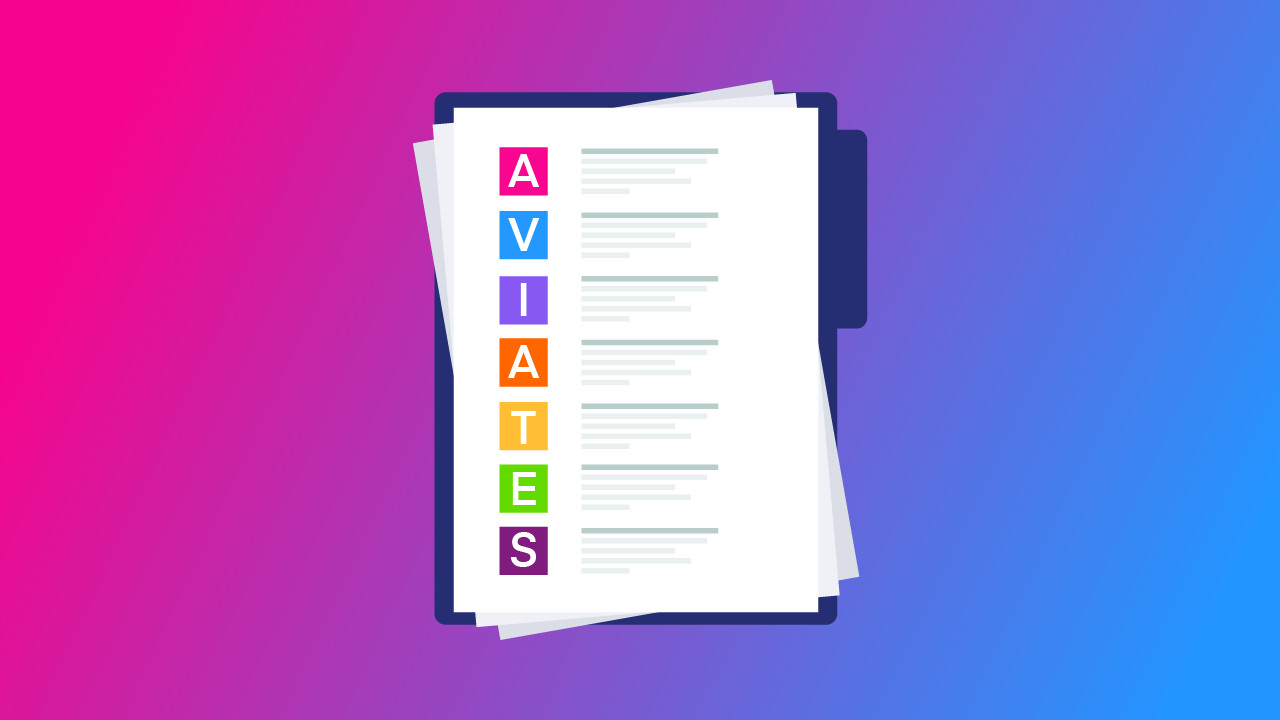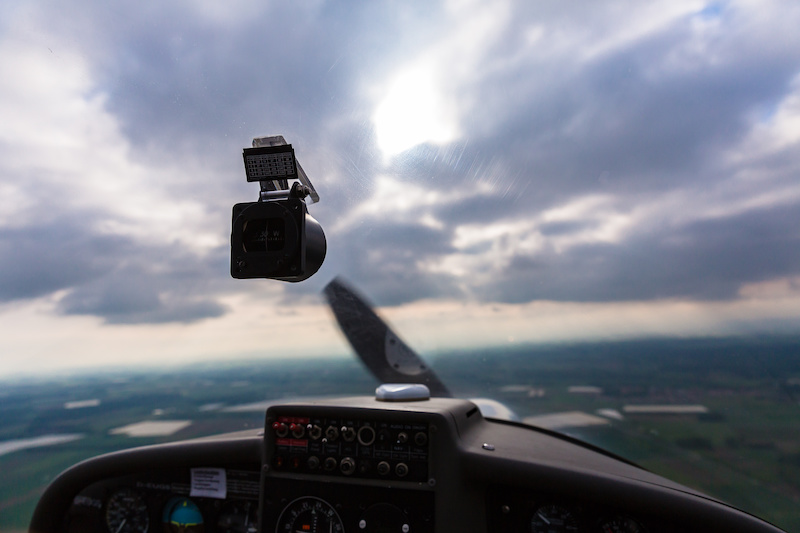-
Key Takeaways
-
Does the FAA Recognize Foreign Pilot Experience?
-
Requirements
-
The Conversion Process
- Foreign License Verification
- Contact Local Flight School
- If Your Foreign License Has an Instrument Rating
- Keep in Mind
-
Unrestricted FAA License
- The FAA Written Exams
- The FAA Checkride
- Getting the FAA Certificate
- Maintaining the FAA Certificate
-
Conclusion
You’re probably wondering how much of a hassle it is to convert your foreign pilot license to a US one.
We’ve got good news and bad news.
The bad news?
It isn’t a walk in the park.
The good news?
We’re here to help.
In this article, we’ll explain everything you need to know about converting your foreign pilot license to a Federal Aviation Administration (FAA) one.
Key Takeaways
- Validate your foreign license and complete FAA paperwork.
- Get a Foreign-Based FAA certificate after FAA verification meeting.
- Pass FAA written exams and checkrides for full certification.
- Stay current with flight reviews, medicals, and recent flights.
Does the FAA Recognize Foreign Pilot Experience?
We all know how valuable flying experience can be when it comes to aviation.
Luckily, our experience can be recognized when transferring from a foreign Private Pilot’s License (PPL) to an FAA private pilot certificate if validated successfully.
A quick side note here; The FAA calls their pilot licenses “certificates.” So an FAA Private Pilot License (PPL) is actually a private pilot certificate. The same goes for the Commercial Pilot License (CPL) – it’s called the commercial pilot certificate.
A Foreign-Based FAA private pilot certificate can be issued after paperwork and verification, but it carries operational restrictions and does not provide unrestricted privileges like a full FAA certificate.
The other option is to obtain a full FAA private pilot certificate, which requires undergoing the conversion process and completing a written and practical exam.
If you hold a foreign Commercial Pilot License (CPL) and wish to obtain an FAA CPL, the process involves two main stages:
- First, you will obtain an FAA Private Pilot Certificate (PPL) based on your foreign license (as per 14 CFR § 61.75). This FAA certificate will grant private pilot privileges, even if your foreign license is a CPL.
- Second, to obtain a full FAA Commercial Pilot Certificate (CPL), you must then meet all standard FAA requirements for a commercial certificate.
This typically includes holding an FAA Private Pilot Certificate, having the required aeronautical experience for a commercial certificate, and successfully passing the FAA commercial pilot knowledge (written) exam and practical (flight) test.
Requirements

So you’re interested in transferring your foreign pilot license to an FAA private pilot certificate to start flying in the US? To do this, you must first have your foreign pilot license validated by the FAA. This process allows the FAA to verify the authenticity of your license and ratings.
So, what are the requirements?
- Hold a valid foreign pilot certification (PPL, CPL, ATP).
- Hold a current foreign or FAA medical certificate appropriate for your license.
- Be willing and able to travel to the US.
- You must complete an online application through the FAA’s Integrated Airman Certification and Rating Application (IACRA) system and submit required forms as part of the process.
The Conversion Process
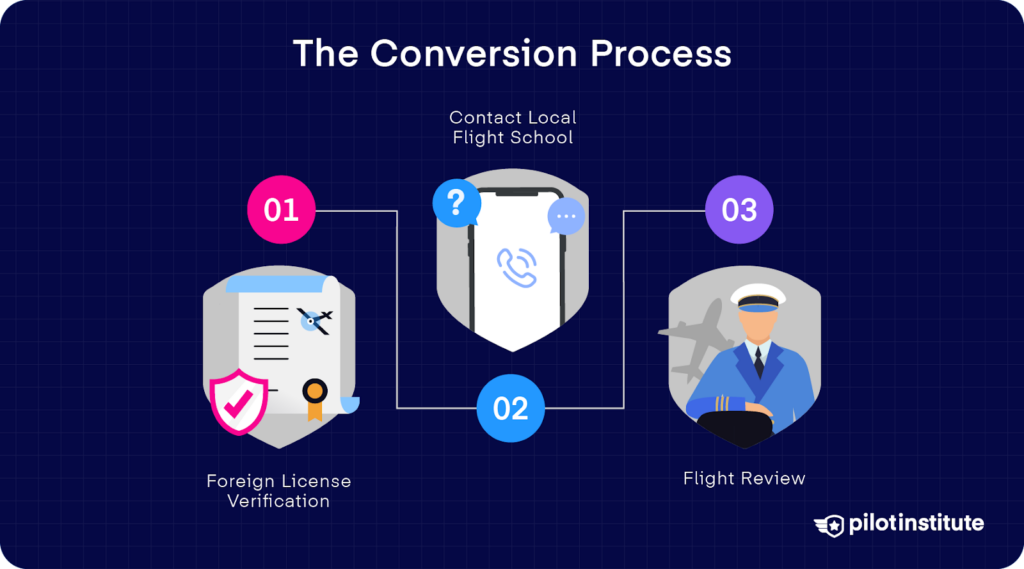
The conversion process may seem daunting at first glance, but it isn’t as bad as it looks once you break it down.
Foreign License Verification
The FAA will validate your foreign license after completing an online application through the FAA website. You will have to create an online profile with the “Integrated Airman Certification and Rating Application” (IACRA) to submit forms.
For the application, you will need to fill out and gather the following forms and documents:
- Completed Verification of Authenticity of Foreign License, Rating, and Medical Certification form (FAA Form 8060-71).
- Copy of your foreign pilot license.
- Copy of your foreign medical certificate (this is only required if you wish to have your foreign medical certificate verified by the FAA in addition to your license. You will need to present proof of holding either a current medical certificate issued by the country that issued your foreign pilot license or a current FAA medical certificate when you meet with the FSDO or DPE for the issuance of your U.S. certificate).
The FAA will contact the civil aviation authority of the country that issued your license to verify that you possess a valid and current foreign pilot license and the ratings thereon.
Once complete, you will receive a Letter of Verification. This can take up to 90 days from the initial application.
You will then have 6 months to visit the US to verify your documents with a Flight Standards District Office (FSDO) Inspector or a Designated Pilot Examiner (DPE).
Contact Local Flight School
Once in the US, you will need to organize an appointment with an FSDO Inspector or DPE. A local flight school can organize this. The inspector will review your paperwork before issuing you with a foreign-based FAA private pilot certificate.
The following requirements need to be met before this meeting:
- Completed Airman Certificate and/or Rating Application (FAA Form 8710-1). (Note: Applications are typically completed online via the FAA’s Integrated Airman Certification and Rating Application (IACRA) system.)
- You are fluent in the English language – able to read, write, and speak to a good standard.
- Hold either:
- (a) A current FAA Medical Certificate.
- Class 3 for private privileges.
- Class 2 for commercial privileges.
- Class 1 for ATP privileges.
- Or (b) a current medical license issued by the country that issued your foreign pilot license, which is valid and appropriate for at least private pilot privileges
- (a) A current FAA Medical Certificate.
If Your Foreign License Has an Instrument Rating
Do you want to convert your instrument rating as well? If so, you must:
Verify Your Foreign License
- Fill out the “Verification of Authenticity” form.
- Mail to: FAA Airmen Certification Branch, AFB-720, Foreign Verification, P.O. Box 25082, Oklahoma City, OK 73125-0082
- Or fax to: (405) 954-9922
Wait for FAA Confirmation
- Takes about 45-60 days.
- You’ll receive an approval letter.
Pass the Instrument Written Test
- Available at FAA computerized knowledge testing centers.
Visit Your Local Flight Standards District Office (FSDO)
Bring:
- Your foreign pilot license.
- Current medical certificate.
- FAA confirmation letter.
- Another photo ID.
- Written test results.
Fees
- No fees if applying within the U.S.
Medical Certificate Notes
- If the license & medical are one document, revalidate the medical in your country before applying.
- If separate, contact a U.S. Aviation Medical Examiner for a U.S. medical certificate.
Keep in Mind
The Foreign-Based FAA private pilot certificate allows the exercise of certain PPL privileges in the US but remains limited compared to a full FAA private pilot certificate.
To continue using privileges in the U.S. with your FAA certificate that is based on your foreign license, you must keep both the FAA certificate and your underlying foreign pilot license (along with its associated medical, if applicable) current and valid.
To obtain an unrestricted FAA private pilot certificate, you must complete the FAA written exams and a practical checkride.
Unrestricted FAA License
The conversion process requires multiple steps, including an online application, foreign license verification, document submission, and an in-person meeting with FAA representatives.
The FAA Written Exams
The written exam is designed to cover all your theoretical knowledge and must be taken before your check ride.
The private pilot written exam consists of 60 multiple-choice questions to be completed within 2.5 hours (150 minutes), requiring a pass mark of 70% or better.
The topics covered are:
- FAA Rules and Regulations
- Weather
- Aerodynamics
- Navigation
- Airspace
The written exam will be similar to the exams you took for your ICAO foreign license, the main difference being the different rules and regulations and airspace associated with the US.
The commercial written exam consists of 100 multiple-choice questions to be completed within 180 minutes, also requiring a pass mark of 70% or better.
The topics covered are the same as the ones you will cover in your PPL, but to a more advanced level. It will also focus on the commercial aspect of aviation when it comes to rules and regulations.
The FAA Checkride
Arguably, the most challenging part of your license is conquering the FAA Checkride.
The checkride tests your theoretical and practical flying skills through an oral exam and a flight test.
The oral exam is a verbal assessment where you must answer knowledge and application-based questions that test your understanding of various topics.
The checkride is a practical test in the aircraft in which you will perform basic maneuvers to a high standard.
For a private pilot checkride, flight test standards are as detailed in the Private Pilot – Airplane Airman Certification Standards (ACS).
They require maneuvers to be performed within specific tolerances, such as maintaining altitude ±100 feet during many flight maneuvers.
The standards become more strict for a commercial checkride, as outlined in the Commercial Pilot – Airplane ACS (maintaining altitude ±50 feet for certain maneuvers) and adherence to specific parameters for commercial operations.
Getting the FAA Certificate
Congratulations! This is the part you’ve been waiting for since the beginning!
Hopefully, all your hard work has paid off, and you’ve succeeded in the FAA Written Exam and Checkride!
What happens now?
The DPE will issue you a temporary certificate after your checkride. Your permanent certificate will be mailed to you by the FAA. Processing and mailing times can vary, often taking several weeks to a few months, so you’ll need to be patient.
For example, some sources suggest this can take 6-8 weeks, while others note it can take longer, possibly around 90-120 days, especially if it needs to be mailed to a foreign address.
Being an FAA private pilot certificate holder, you must understand the privileges and limitations of your certificate.
We recommend getting a brief overview of private pilot certificate privileges, limitations, and requirements.
Maintaining the FAA Certificate
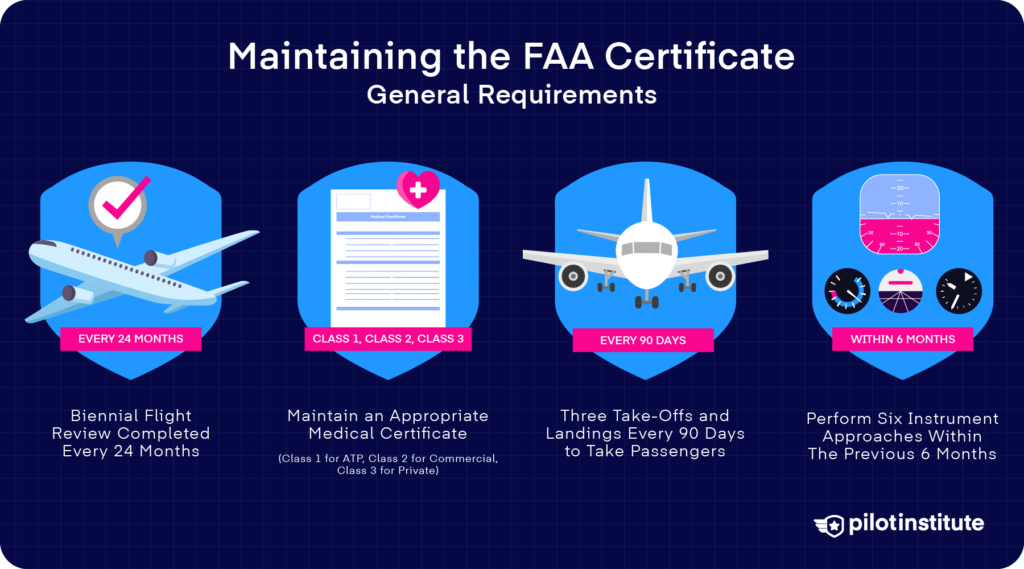
Currency is important for safety in aviation.
There are specific rules and regulations for pilots to maintain their FAA certificate.
Although a private certificate and a commercial certificate are valid for life, there are specific ongoing requirements to remain current.
The general requirements are:
- A Biennial Flight Review must be completed every 24 months.
- Maintaining an appropriate medical certificate (at least a Class 2 medical certificate to exercise commercial pilot privileges (14 CFR § 61.23(a)(2)); at least a Class 3 medical certificate for private pilot privileges (14 CFR § 61.23(a)(3)). A Class 1 medical certificate is required for ATP privileges (14 CFR § 61.23(a)(1))).
- Three take-offs and landings every 90 days to take passengers.
- For an instrument rating, to maintain currency, you need to have performed and logged within the preceding 6 calendar months: at least six instrument approaches, holding procedures and tasks, and intercepting and tracking courses through the use of navigational electronic systems.
These currency requirements are generally aligned with ICAO standards. You will need to be aware of and meet these requirements to continue exercising the privileges of your certificate.
Failure to maintain currency will prevent you from legally acting as pilot-in-command or carrying passengers.
Conclusion
After you’ve converted your license and ratings, it’s essential to maintain the currency of your FAA certificate.
The way the FAA judges competency can vary from what you’re used to, so you need to stay sharp.
Are you planning on getting an instrument rating, or already have one?
Read this article on the instrument currency requirements in the US so that you aren’t surprised after your conversion.
